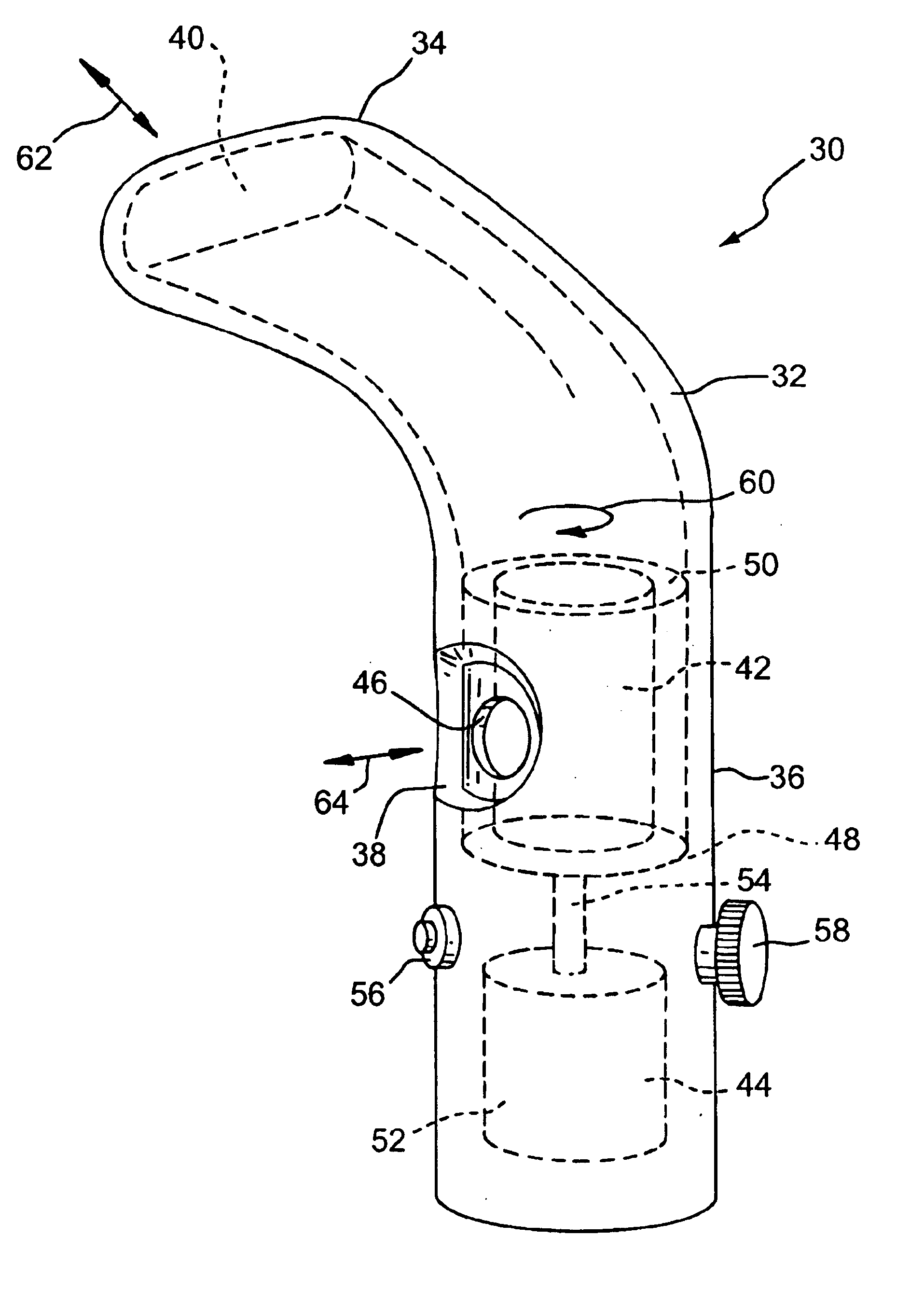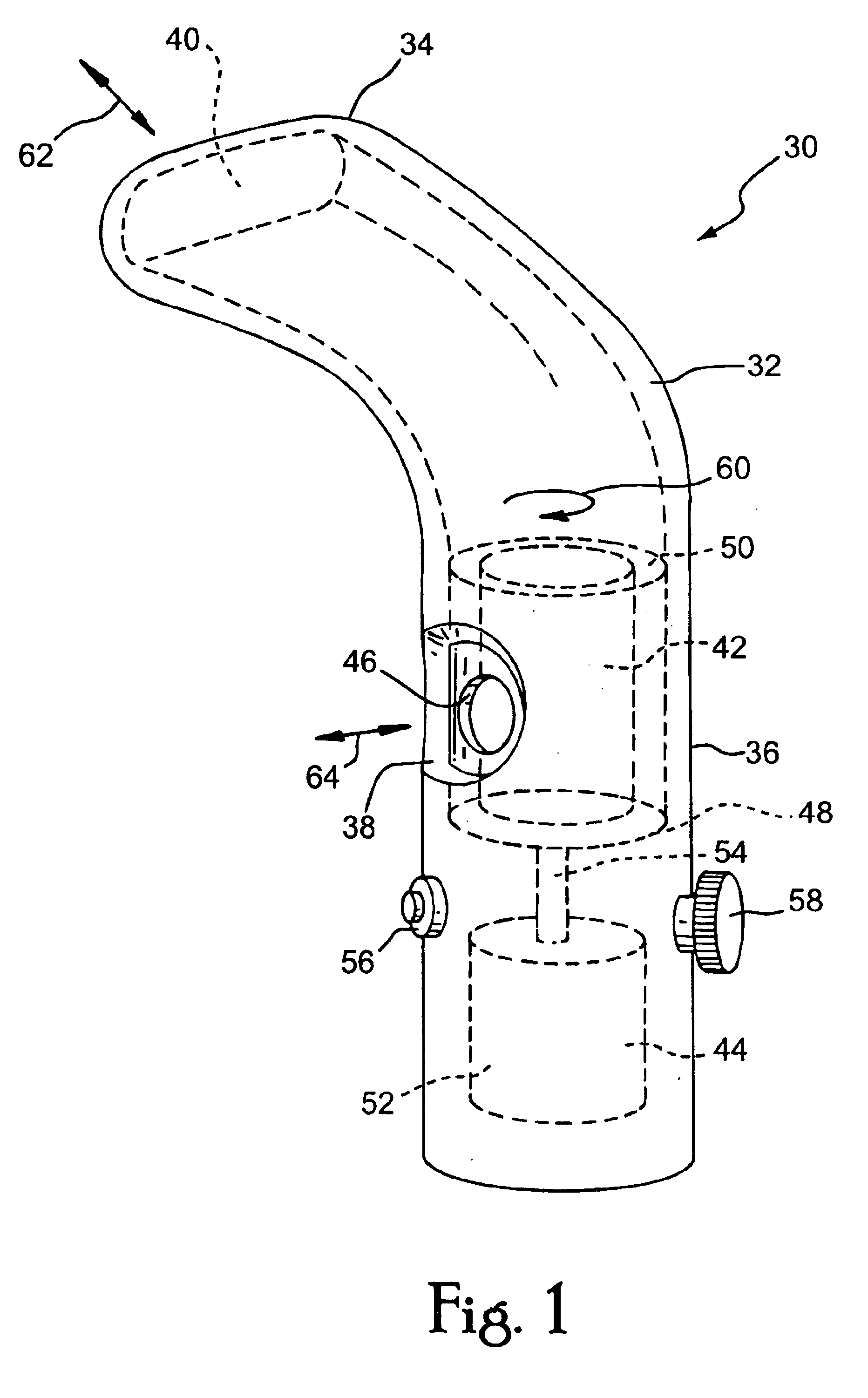Apparatus and method for providing high frequency variable pressure to a patient
a technology of high frequency variable pressure and apparatus, which is applied in the direction of valve details, valve arrangement, operating means/releasing devices of valves, etc., can solve the problems of gas diffusion, patient using the ventilator to face gas diffusion problems, and create a disproportionate gas exchange in the lungs
- Summary
- Abstract
- Description
- Claims
- Application Information
AI Technical Summary
Problems solved by technology
Method used
Image
Examples
Embodiment Construction
FIG. 1 illustrates a first embodiment of a high frequency pressure oscillation device 30 according to the principles of the present invention. Device 30 includes a patient circuit 32, which, in the illustrated exemplary embodiment, is a generally cylindrical conduit having a mouthpiece end 34 and a breathing gas source coupling end 36. A first port 38 is defined in end 36 so that breathing gas can enter the patient circuit and exhaled gas can vent from the patient circuit. Likewise, a second port 40 is defined in mouthpiece end 34 so that the patient can deliver and receive gas from the source of breathing gas through the patient circuit. In the illustrated embodiment, the source of breathing gas is ambient atmosphere. It is to be understood, however, that the source of breathing gas can be any supply of gas other than ambient atmosphere, such as oxygen or an oxygen mixture provided from a storage tank or a pressure generating device.
A valve 42 is disposed in patient circuit 32 at e...
PUM
 Login to View More
Login to View More Abstract
Description
Claims
Application Information
 Login to View More
Login to View More - R&D
- Intellectual Property
- Life Sciences
- Materials
- Tech Scout
- Unparalleled Data Quality
- Higher Quality Content
- 60% Fewer Hallucinations
Browse by: Latest US Patents, China's latest patents, Technical Efficacy Thesaurus, Application Domain, Technology Topic, Popular Technical Reports.
© 2025 PatSnap. All rights reserved.Legal|Privacy policy|Modern Slavery Act Transparency Statement|Sitemap|About US| Contact US: help@patsnap.com



